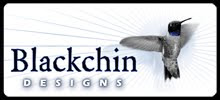 A White Ibis at the idyllic Home Depot Pond.
A White Ibis at the idyllic Home Depot Pond.Every September, two momentous events hit Gainesville on the same day: the infamous
Florida-Tennessee hate match , and the county-wide
Fall Migration Count. Of course, I completely ignored the former and got completely sucked into the latter.
I'd never done a bird count before; back in OC, I had the impression that the only people who did these were the Really Good Birders, and that my participation would be more of a hindrance than a help. But out here, the birding community is small and tight, and it's almost impossible to bird alone: if you hit any hotspot wearing binoculars, you will meet people, and these people will no doubt know every other local birder you've ever run into.
And if you met any of these people two weeks ago, you'd get drafted onto one of the count teams. And it was made clear that my utter ignorance about local bird life was no excuse not to participate.
Our team of 8 birders started out at 6:30 am. At Kanapaha Prairie, a private tract of farmland and and homes, we watched flocks of Sandhill Cranes and Wood Storks fly overhead as the sun rose, and caught a few Eastern Meadowlarks hopping around on fence posts.
At Chapman Pond, a pretty little holding basin owned by the local utility company, we saw Tricolored Herons, Snowy Egrets, Common Moorhens, and both White and Glossy Ibises. The Glossies were new birds for me, but they look so much like White-faced Ibises, they really seemed familiar. (This shot's for you, Corey!)

During the drive to our next spot, Kanapaha Botanical Garden, we looked for birds from the car. This netted me another lifer, a White-winged Dove. The botanical garden was gorgeous—filled with lots of twisty little stone-paved trails leading to romantic little gazebos and cozy benches tucked beside ponds and waterfalls. An utterly perfect place for a first kiss—or any kiss, for that matter.
Alas, it wasn't that great for birds. The goal of the count was to track fall migrants, but we didn't get very many. After a couple of hours of getting nothing more interesting than a single Ovenbird and handful of American Redstarts, we took a much-needed lunch break.
Our afternoon went much like our morning—great conversation and scenery, but not a lot of birds. But it was fun for me to see some new birding spots I'd only heard about. One was yet another little pond, stuck between a freeway overpass and a shopping center. At the evocatively named Home Depot Pond, we saw a huge flock of Black-bellied Whistling Ducks, as well as the most motley assortment of Mallard/Muscovy hybrids ever.
One of our last stops was at Laurel Hill Cemetery, in the nearby town of Archer. I learned that one year, someone doing the count claimed that a ghost had followed her home from the cemetery and assaulted her. Maybe THAT'S why they were trying so hard to recruit new people this year!
Again, we didn't get any warblers other than a couple of Northern Parulas. (On the upside, we didn't encounter any evil spirits either.) But I did get my third lifer of the day, a Red-headed Woodpecker—since it was raining while we were there, I didn't take out my camera, so alas, no photos!
Ironically, while yesterday was a nearly warbler-free day, today the warblers were flitting about in force. At Palm Point, I got Ovenbirds, a female Hooded Warbler (another lifer for me), a Yellow and Yellow-throated Warbler, several American Redstarts, a Northern Parula, and a couple of Black-and-White Warblers:
 I have no idea which way his head is facing, either.
I have no idea which way his head is facing, either.I ran into another birder there (who, of course, did the count yesterday with another team, whose team members I also knew); he managed to see a Blue-winged Warbler, which I unfortunately missed. Maybe next time!
The other fun birds I got today were a group of very active Pileated Woodpeckers, drumming away loudly in the treetops:

Someone once said that character is what you do when no one is looking. And perhaps the character of a place is the number of birds out when nobody is counting.




























